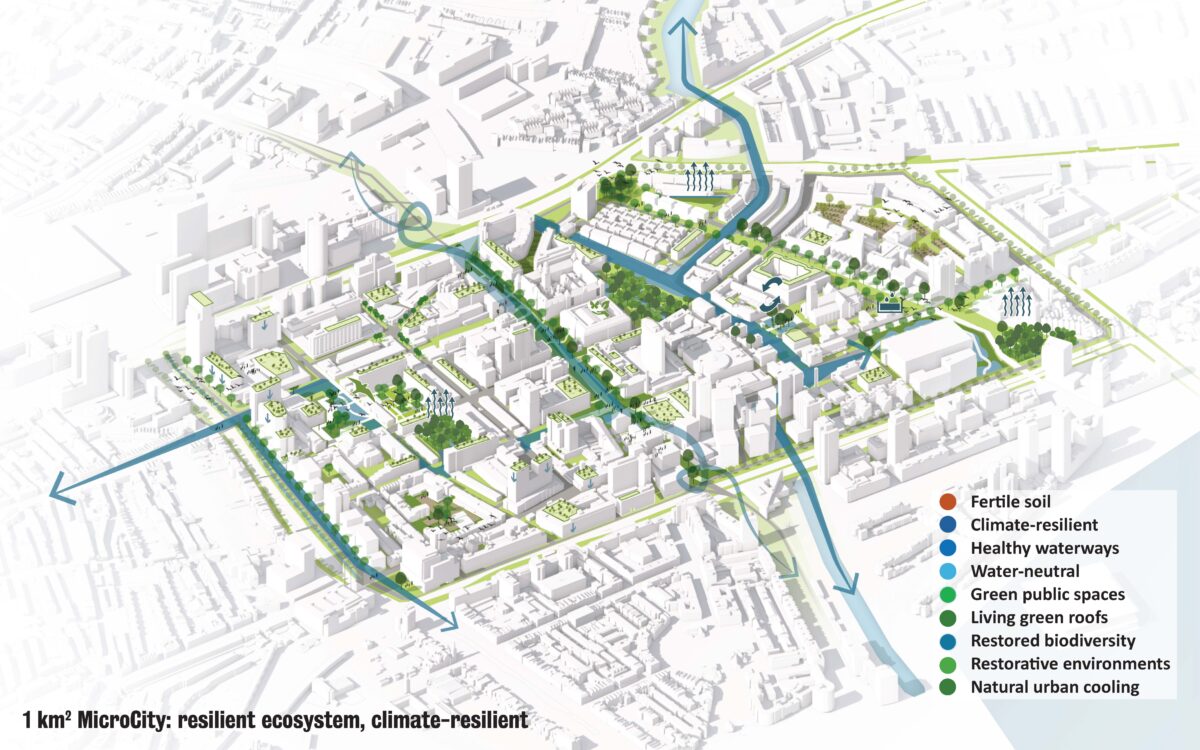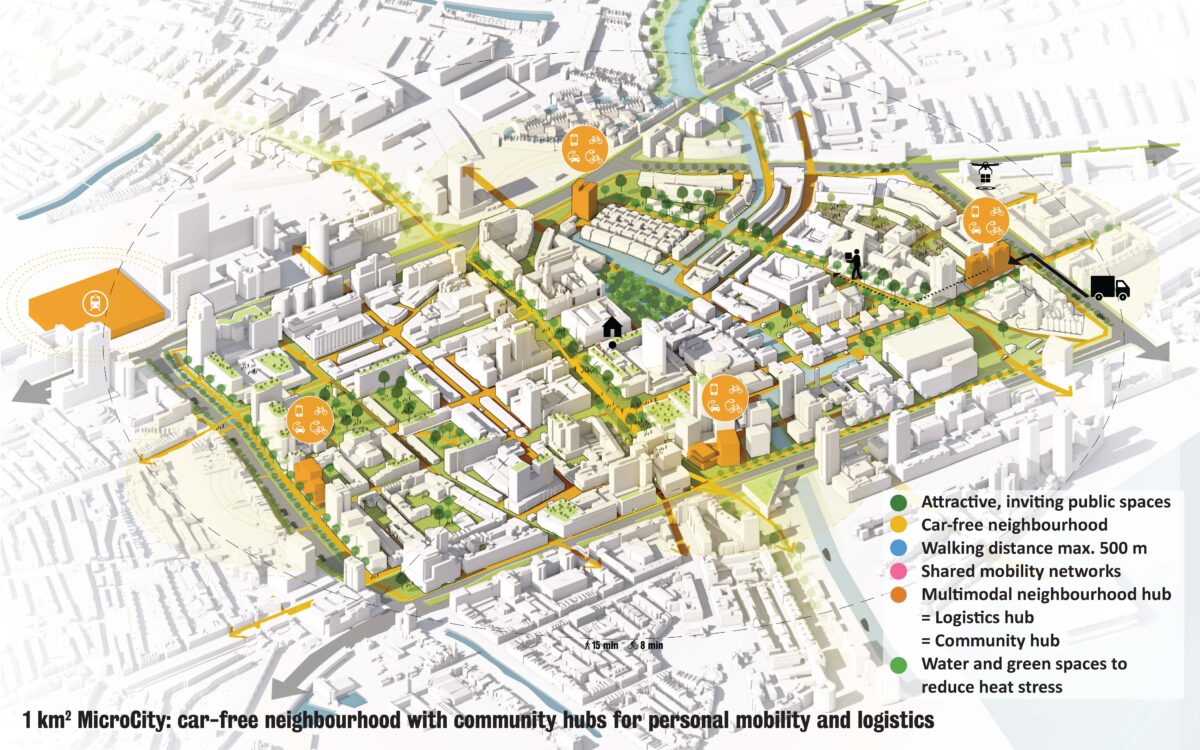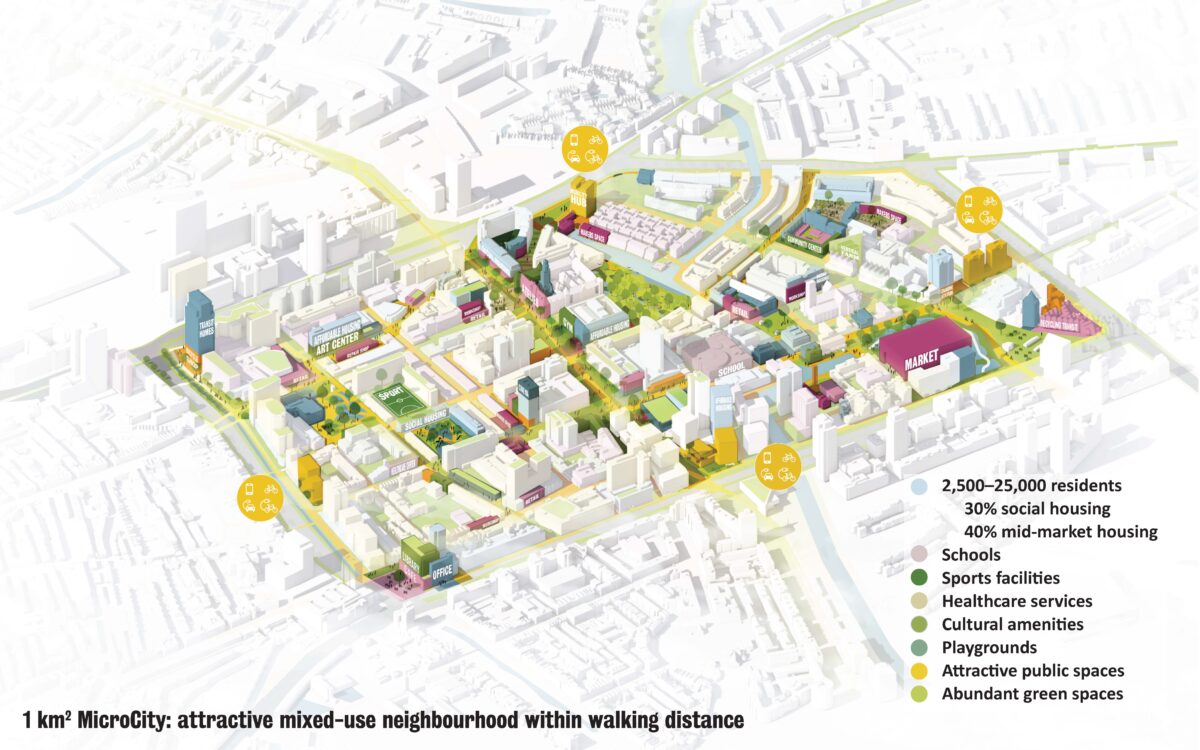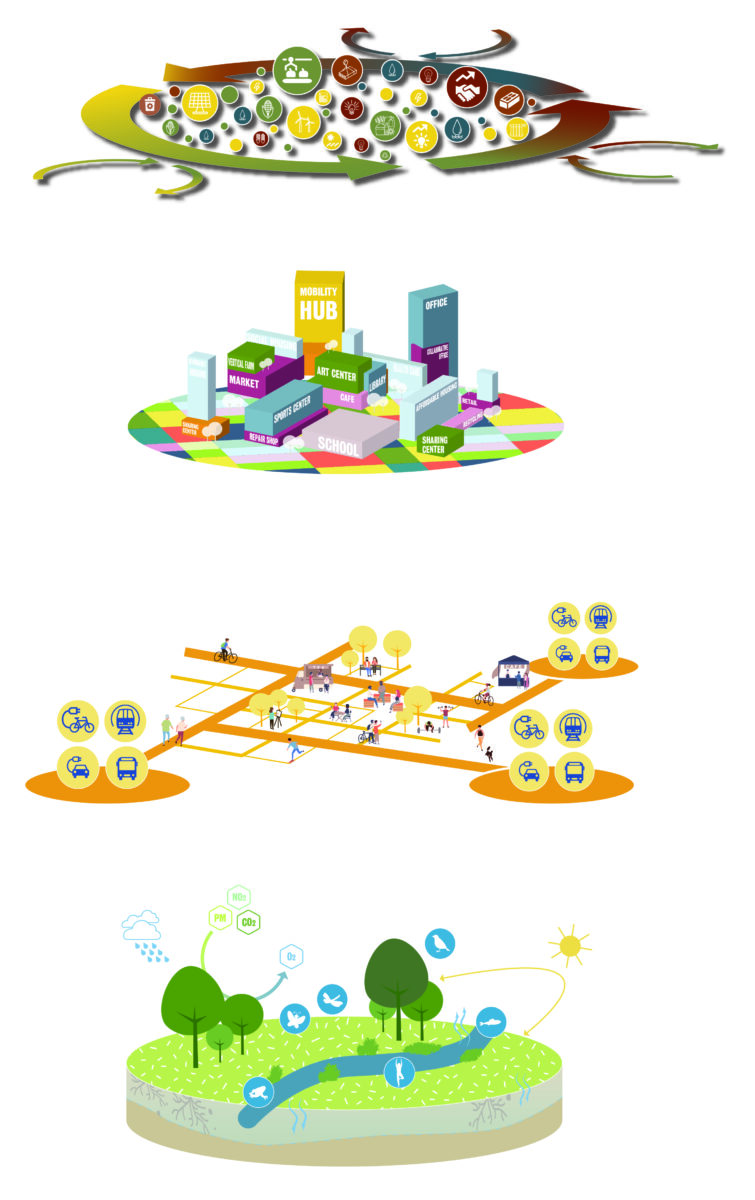MicroCity
(NL), 2025
Information
Our cities are facing unprecedented pressures. Climate change, population growth, housing shortages, rising mobility, social inequality, and rapid technological change demand new ways of living, working, and moving. How can we (re)design urban areas to be sustainable, healthy, and socially just?
Since 2004, VenhoevenCS has been exploring this question through MicroCity – a practical, design-led model for organising cities. MicroCity shows how global ambitions, from the Sustainable Development Goals to the Paris Climate Agreement, can be translated into tangible improvements at the neighbourhood level.
The MicroCity concept
MicroCity builds on global strategies in economy, technology, and society, offering a flexible framework for creating neighbourhoods that benefit people, the environment, and the economy. It applies to both new developments and the renewal of existing areas, with a focus on climate adaptation and strengthening local health, economy, mobility, ecology, and social cohesion.
Central to the model are circular systems – extending beyond financial cycles to include materials, energy, water, food, and waste. Community hubs act as vibrant local centres for mobility, logistics, work, and social activities, linking each neighbourhood to the wider city and other MicroCities. Inspired by international examples such as Paris’s Fifteen-Minute City, Barcelona’s Superblocks, New Urbanism in Singapore, and community wealth-building in Preston, MicroCity goes further: it reinterprets urban living, creating neighbourhoods where people, nature, and economy are in balance – step by step, neighbourhood by neighbourhood.
A neighbourhood as an ecosystem
A typical MicroCity covers roughly one square kilometre – large enough to function independently, yet small enough to remain human-scale. Housing, work, recreation, and daily amenities are woven together in a network of attractive public spaces and pedestrian- and cyclist-friendly routes.
Daily life takes place within walking or cycling distance. Cars and freight traffic are mostly confined to the edges, around the community hubs – lively centres combining mobility, logistics, care facilities, workplaces, shops, and social amenities. This keeps the neighbourhood largely car-free, creating space for greenery, children at play, and social interaction.
MicroCity is not a fixed blueprint but a flexible framework, adaptable to any context. Whether applied to new districts or existing ones, it focuses on strengthening local cohesion – between people, systems, and functions – to make neighbourhoods resilient and future-ready.
The five layers of a resilient city
Beneath the visible urban fabric lies a system of five interlinked layers, each essential to a healthy, sustainable neighbourhood:
- Healthy soil and biodiversity – Rainwater harvesting, micro-forests, and green roofs improve soil, water, air quality, and cooling.
- Green infrastructure and accessible mobility – Dense networks for walking, cycling, and shared mobility link homes, amenities, and hubs. Residents live within 500 metres of a mobility node.
- Vibrant communities and culture – Diverse housing, local jobs, public spaces, and amenities encourage social interaction, creativity, and reciprocity.
- Circular economy and local systems – Energy, materials, and food are produced, shared, and reused locally through initiatives such as urban agriculture, reuse centres, and community energy.
- Community management – Residents, businesses, and authorities collaboratively manage resources, keeping value circulating locally.
Together, these layers create self-reinforcing neighbourhoods: green spaces capture water and cool urban areas, shared mobility reduces congestion, and local production strengthens both the circular economy and social cohesion. MicroCity integrates multiple policy goals into a single spatial model that is easy to apply and scale.
From research to practice
MicroCity is a living model, continuously refined through practical projects at VenhoevenCS. Each application – from mobility hubs to area visions – generates insights that further develop the approach. In this way, MicroCity evolves from project to project, informed by concrete design challenges and strategic research.
The model guides projects such as Handreiking Stedelijke Knooppunten (MooiNL programme), Hilversum Sportpark, and Het Platform in Utrecht, connecting policy, design, and implementation to address complex challenges in an integrated way.
Beyond the studio, MicroCity is shared through lectures, publications, and collaborations with governments, research institutions, and professionals, contributing to the wider conversation on designing cities that balance people, nature, and economy.
Shaping the cities of tomorrow
MicroCity demonstrates that sustainability is more than technology or policy – it is a way of living. By strengthening local networks, circular systems, and social structures, neighbourhoods become resilient, self-reliant, and connected.
More than a design strategy, MicroCity is an invitation: to reinvent our cities – step by step, neighbourhood by neighbourhood – as places that truly work for people, nature, and society.
Statistics
| Name: | MicroCity |
| Assignment: | Research by design |
| Period: | 2004 - ongoing |
| Status: | In Progress |
Credits
| VenhoevenCS: | Ton Venhoeven, Hermen Jansen, Martijn Tjassens Keiser, Rebecca Smink, Jard van der Lugt, Lucas Schram, Nicolas Handtschoewercker. |
| Images: | VenhoevenCS |





